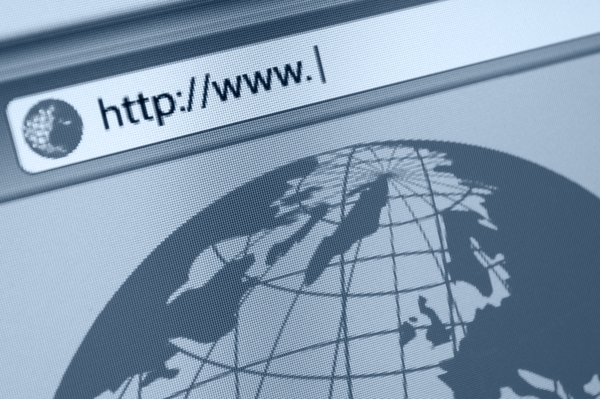
Technology has been a driving force in shaping the modern workplace, revolutionising the way businesses operate. From the creation of mechanical machines during the Industrial Revolution to the invention of computer systems in the mid-20th century, technology has evolved to meet the needs of an ever-changing business landscape. However, it’s the rise of Information Technology (IT) in recent decades that has brought about transformative changes. IT has not only enabled businesses to streamline processes, increase productivity, and enhance customer experience but has also fundamentally changed the nature of work itself. With the rapid growth of digital technologies, the workplace has become more interconnected and responsive to customer needs.
Digital Computing
The creation of digital computing marked a significant turning point in the history of technology. The first electronic computers were developed in the 1940s, but it wasn’t until the 1950s and 1960s that they began to be used in business settings. Early mainframe computers were massive machines that took up entire rooms and were primarily used for scientific calculations and data processing. As technology improved, businesses started to use these tools for various tasks such as accounting, inventory management, and payroll processing. This allowed companies to process large amounts of data quickly and accurately, leading to increased productivity and efficiency. The use of computers also enabled businesses to automate many routine tasks, freeing up employees to focus on more complex and creative work. This laid the foundation for the digital revolution that would transform the business world in the years to come.
Personal Computers and Office Productivity Tools
The rise of personal computers and office productivity tools in the 1980s and 1990s transformed the way businesses operated. Desktop computers became affordable and accessible, allowing employees to work independently and efficiently. Software like Microsoft Office, which included applications such as Word, Excel, and PowerPoint, enabled workers to create documents, spreadsheets, and presentations with ease. These tools automated many manual tasks, such as typing, calculating, and formatting, allowing employees to focus on higher-level tasks and increasing overall productivity. The widespread adoption of personal computers and office productivity software has remained a permanent change ever since.
Connectivity and the Internet Age

Email, video conferencing, and instant messaging have transformed communication dynamics, enabling rapid and efficient exchange of information across distances. Web-based resources and databases have made it easier for businesses to access vast amounts of information, providing them with valuable insights and data to inform decision-making. The Internet has also enabled businesses to reach new customers and markets, both domestically and internationally, opening up new opportunities for growth and expansion. Moreover, the internet has enabled businesses to adopt new models of collaboration, such as remote work, which has further expanded their reach and flexibility.
Mobility and Remote Work
Mobile devices such as laptops, smartphones, and tablets have enabled employees to work from anywhere, at any time. Virtual private networks (VPNs) and cloud services have made it possible for remote workers to securely access office resources, collaborate with colleagues, and maintain productivity while away from the traditional office setting. This technological advancement has led to a cultural and logistical shift towards more flexible working environments, with many businesses embracing remote work as a viable alternative to traditional office arrangements. Remote work offers benefits such as reduced commuting time, increased work-life balance, and access to a wider talent pool. However, it also presents challenges such as managing communication, maintaining team cohesion, and ensuring data security. As mobile technology continues to advance, the line between work and personal life may continue to blur, offering even greater flexibility and autonomy for employees.
Collaborative Platforms and Software as a Service
Collaborative platforms such as Slack, Microsoft Teams, and Google Workspace have revolutionised the way teams work together. These platforms provide a centralised space for team members to communicate, share files, and work on projects together in real-time. They offer features such as chat channels, video conferencing, file sharing, and project management tools, making it easier for teams to collaborate effectively, regardless of their location. Additionally, Software as a Service (SaaS) models have become increasingly popular among businesses, offering a cost-effective and convenient alternative to traditional software installations. SaaS models allow businesses to access software applications over the internet, eliminating the need for expensive hardware and IT infrastructure. This approach provides greater scalability, flexibility, and affordability, enabling businesses to adapt quickly to changing market conditions and customer needs.
Artificial Intelligence and Automation
![]()
AI-driven tools have been introduced that assist in data analysis, customer support, and decision-making, enabling businesses to make informed decisions and improve customer experiences. For instance, chatbots powered by AI algorithms are being used to provide 24/7 customer support, helping businesses save time and resources. Automation tools have also reduced repetitive tasks, freeing up employees to focus on high-value tasks that require human creativity and judgment. By streamlining processes and improving accuracy, automation has increased efficiency and productivity, leading to improved profitability and competitiveness. With AI and automation, businesses can now process large amounts of data quickly and accurately, gaining valuable insights that help them stay ahead of the competition.
Data Security and Cybersecurity
Data security and cybersecurity have become critical concerns for businesses as they rely more heavily on digital technologies. The increasing amount of sensitive information stored online has made it essential for companies to protect themselves against cyber threats. IT departments play a vital role in developing advanced security protocols and methods to safeguard this information. They implement firewalls, encryption techniques, and other security measures to prevent unauthorised access to company data. Regular updates and training programs ensure that employees are aware of the latest security risks and best practices. Companies also invest in threat detection and response systems to identify potential breaches and minimise damage. Effective data security and cybersecurity strategies not only protect against financial losses but also maintain customer trust and reputation.
Sustainability and Green IT
As concern for the environment grows, the IT industry is shifting towards eco-friendly technologies and practices. Businesses are recognising the impact their operations have on the planet and are taking steps to reduce their carbon footprint. One way they’re doing this is by adopting green IT practices, such as using energy-efficient servers, virtualisation, and cloud computing. These technologies not only reduce energy consumption but also lower operating costs. Moreover, responsible IT recycling is becoming increasingly important as businesses look to dispose of old equipment in an environmentally friendly manner. Many organisations are partnering with certified electronics recyclers such as Recycling Your IT to ensure that their retired IT assets are disposed of safely and responsibly. By implementing sustainable IT practices, businesses can reduce their environmental impact while also promoting sustainability and social responsibility.
The impact of IT on the modern workplace has been profound, revolutionising the way businesses operate and empowering workers with new tools and capabilities. From collaboration platforms and remote work arrangements to AI-driven automation and data analytics, IT has transformed the landscape of work, enhancing productivity, efficiency, and decision-making. As we move forward, the potential for further innovation is vast, with emerging technologies like augmented reality, blockchain, and quantum computing poised to reshape industries and create new opportunities.
